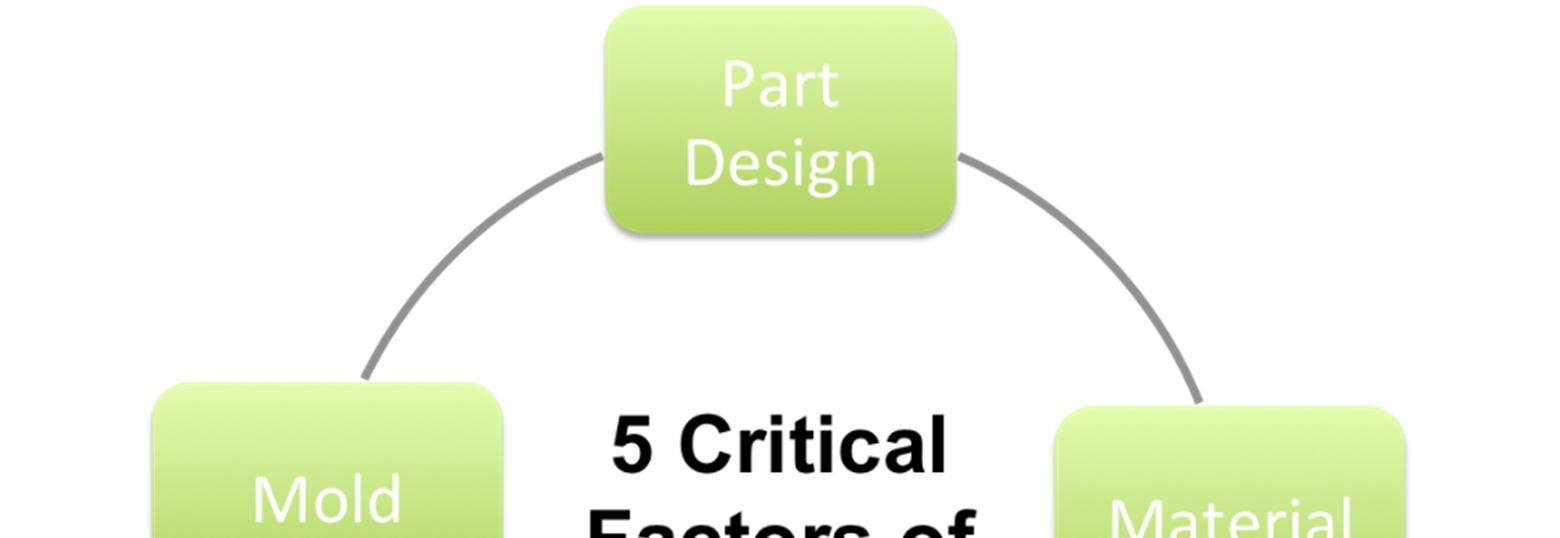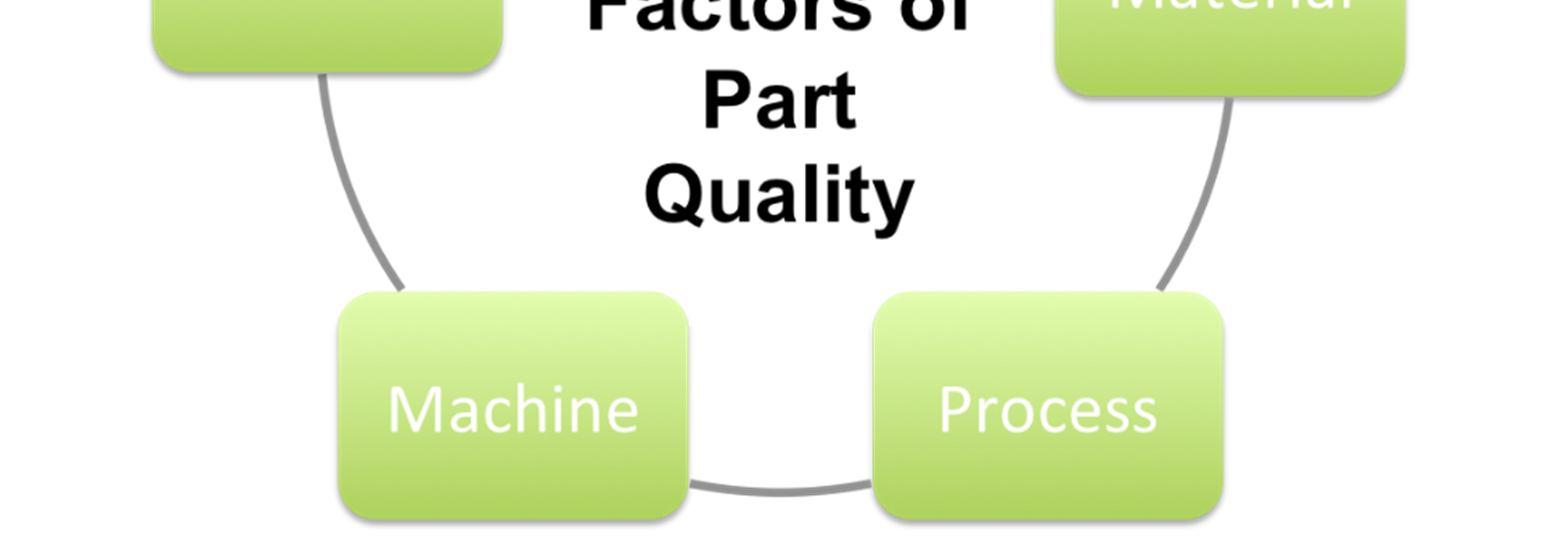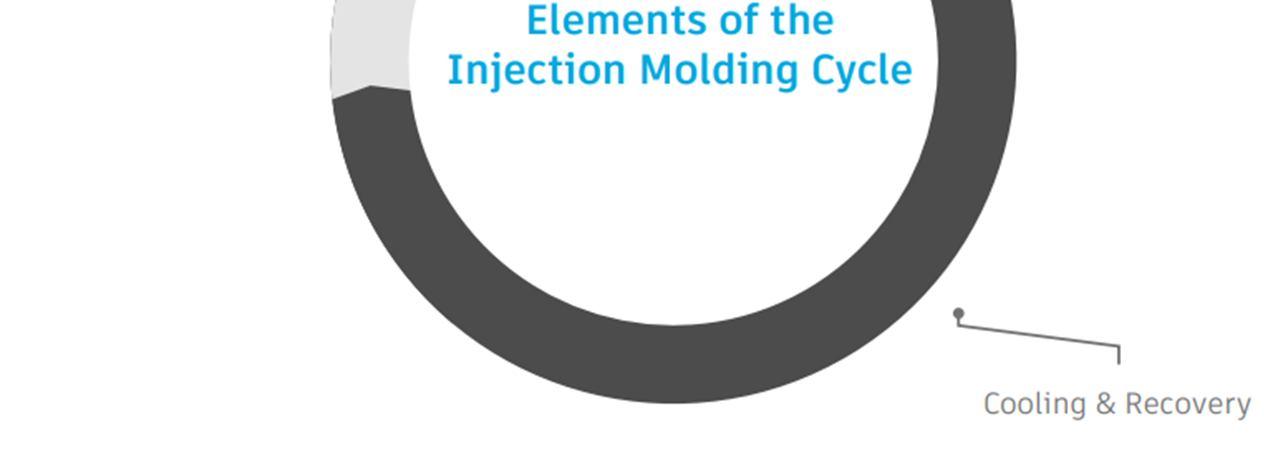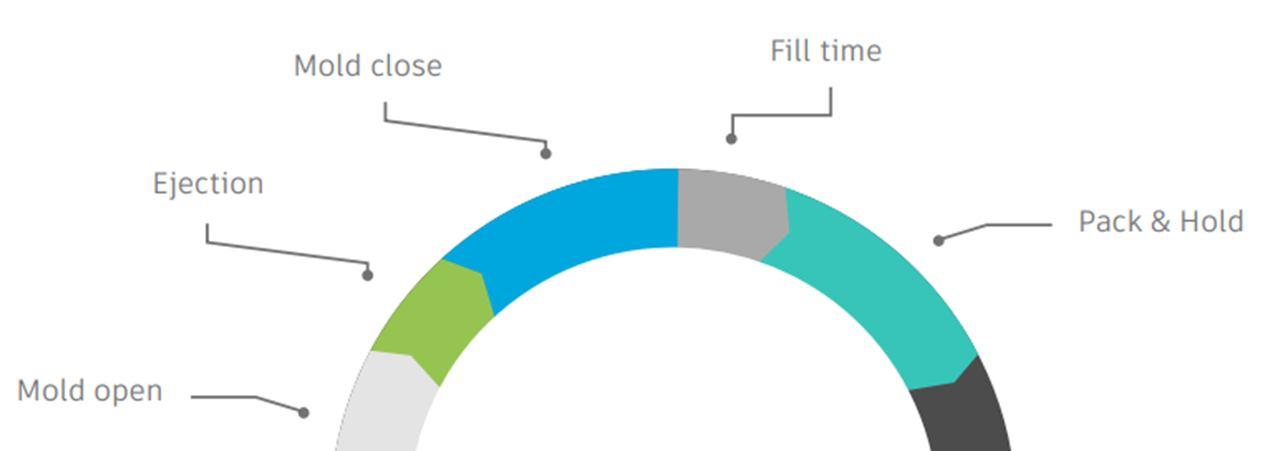
12 minute read
International Journal for Research in Applied Science & Engineering Technology (IJRASET)
from Improved Productivity and Efficient Manufacturing Using Injection Molding and 3D Printing A Review
by IJRASET

ISSN: 2321-9653; IC Value: 45.98; SJ Impact Factor: 7.538
Advertisement
Volume 11 Issue III Mar 2023- Available at www.ijraset.com
Table 1: Process and Cause of Errors
No Area Process Cause of Errors
1. 3D Printing Product Design
Software parameters
Product dimensions (size, shape, location, etc.)
Product features (thickness, corners, cuts, etc.)
2. 3D Printing Deciding which printer to use, selecting the suitable range of materials and the technologies
3. Injection Molding Choosing the right product and resin for the job
4. Injection Molding Choosing the mold, runner, gate, and other process variables
5. Injection Molding Injection of the molten resin
6. Injection Molding Ejecting the final product
Type of printer (FDM, SLA, and SLS)
Printer features (speed, size, accuracy, durability, and material.)
Quality of filament
Slicing software
Features of the product (thickness, corners, cuts, etc.)
Resin characteristics (density, thermal conductivity, viscosity, surface tension, etc.)
Mold components and materials, mold thermal conductivity,
Runner (hot/cold), size, shape
Gate (location, cross-section)
Process variables
Resin characteristics
Process variables
Machine specifications
Shape, location, and type of cooling channel.
III. LITERATURE REVIEW
To understand the essential aspects and improve the molding operations, an extensive study is being conducted. Practical experimental tests and theoretical, computer-based simulation models have served as the foundation for a large portion of the work done over the past decade [2]
Here, we take a survey of some of the many research which is being done.
1) Shailesh Singh, Sunil Sahai, and Manoj Kumar Verma, 2021 [2]: Here from the creation of concepts to the manufacturing of products, the fundamental management principles are mastered. Processing parameters were supported by the effects of the several components examined. Given that productivity and quality are two crucial competing requirements in any machining operation. It is necessary to make some quality sacrifices in order to achieve high production. Similar to this, productivity declines but efforts to raise quality are focused. Optimizing the parameters of the machine is crucial to ensure the highest levels of quality and productivity. Different responses to the product performance criteria and procedures of the injection mold manufacturing process are investigated. This report provides an illustration of the current status of plastic injection molding. The manufacturing of a high-quality product satisfies the work performance. The study's conclusion was that a lot of work is being done in this area. However, a few of them have achieved success, necessitating extra attention in this area. This is due to the fact that, according to this study, many errors are brought on by processing parameters. Consequently, the product requires quality control procedures for the process parameters.
2) Oladapo, Bankole I., et al. 2020 [4]: There is a demand for necessary medical devices as a result of the coronavirus outbreak in 2019 (COVID-2019) due to the SARS0CoV-2 virus as well as its outbreak repercussions. It became more vital as the COVID19 battle grew more intense to map out the disease's issues and stop its spread using the most up-to-date technology. One of several techniques that proved crucial in the struggle against COVID-19 was 3D printing. The authors of this paper assessed the progress made toward using 3D printing to solve COVID-19 as of October 2020 [6] This paper highlights the following:
3D printers and software prevent COVID-19 because there was a lack of PPE during the outbreak.
Describes in detail how to quickly and efficiently create 3D face masks and ventilators.
Assesses the possibility of 3D printing to increase the supply of medical equipment to combat COVID-19
Examines significant 3D printing innovations from diverse institutions.
Outlines a prospective path for medical equipment that would be used to treat and prevent COVID-19.
ISSN: 2321-9653; IC Value: 45.98; SJ Impact Factor: 7.538

Volume 11 Issue III Mar 2023- Available at www.ijraset.com
3) Fan, Daoyang, et al. 2020 [5]: This article reviews recent developments in 3D printing technology used to provide medical supplies. With its superior ability to create designs tailored specifically to a patient, high level of difficulty, preferable efficiency, and affordable manufacturing techniques, 3D printing is quickly gaining popularity as a production technology for use in medical operations. The primary uses for 3D printing in medicine are for tissue, anatomical, and validation models. Also, the design of pharmacological equipment as well as medical instruments and devices. The usage of 3D printing in orthopedics, one of the most technical fields, produces items for end users such as surgical navigation boards, spinal models, and restorations. A leader in medical device development is orthopedics. Currently, there are numerous 3D-printed medical products available on the market, such as surgical instruments, acetabular cups, knee implants, and spinal cafes. Additionally, 3D printing is used to create a custom hearing aid housings in about 99% of cases. The way doctors and health care workers were educated for surgical procedures has been revolutionized by pre-surgery printed physical models. About 16 different types of tissues have been printed by researchers thus far, providing tissue models for greater drug discovery. It is thought that the impact of 3D printing on clinical and associated basic research is expanding.
4) Yang, Kefan, Youmin Wang, and Guoqing Wang, 2022 [8]: There are five mold input variables that are studied in this research, the mold and melt temperatures, the holding time, and pressure, as the cooling time. These variables are very important to both the mold and the product during production. Each exploratory criterion is consistently chosen at 4 stages, and orthonormal tests are used to determine the effects of each input variable on the shrinkage volume and surface roughness deformation of the inner panel of a car door.
5) Gu, Jiren, and Longbo Chen, 2021 [9]: Tried to introduce a new concept using computer-aided techniques to develop mechanical molds. According to them, Industrial productions are available in several different forms. There are many various uses for industrial products in daily life. They are unquestionably necessary to our daily lives. It was found that the mold industries are responsible for a large portion of the creation of products in industries. The mechanical design sector also has its roots in the mold industry. The conventional mold design notion, however, is a fairly old one. Additionally, there are a lot of drawbacks to standard mold design. On the basis of this, the specialists proposed a mechanical mold design that was supported by computer technology.
6) Agung, Daniel, Fransisca Debora, and Humiras Hardi Purba, 2018 [10]: As titled, the paper emphasizes how crucial it is for every industry to have a product's productivity. The OEE approach was used in the paper to assess the productivity of the injection mold and evaluate the five injection molds with the maximum standard working time between April and July. The study produced a rise in the median proportion of cavities from the pre-study average of 84.13% in April to July 2018 to the post-study average of 99.23% in August and September 2018, as shown in Figure 15. Additionally, the percentage increased from 76.6% in April to July 2018 to 94.33% in August and September 2018, both of which were the results of the study.
7) Park, HONG-SEOK, XUAN-PHUONG Dang, and Branko Katalinik, 2018 [11]: In this work, a conformal cooling channel that is used in a medium-sized injection mold to create an automotive component is studied. To shorten the cycle time and raise the caliber of the molded object, we enhanced the cooling system of an already-existing mold. The cooling phase, which makes up more than two-thirds of the molding cycle in injection molding, is particularlysignificant. A local approach was chosen because 3D printing is very expensive for making large molds. In order to effectively cool particularly hot areas of the mold, inserts with conformal cooling channels are a wise choice. Combining analytical and CAE simulation techniques, conformal cooling channels were designed. The cooling channel variables were generally identified using the analytical method, and the design was checked, tweaked, and the results were visualized using the simulation method. We examined the mold's performance in its present state and identified its shortcomings. In order to assess the state of the art and choose the best solution, the literature review methodology was also used. The circular pattern colling channel was determined to be the ideal option. The inserts were made using a direct metal laser melting technique. The cooling period can be cut by 23%, according to the results of actual testing. This represents a significant advancement from the project's initial stage. The smart system for such mold that was determined in section 4 will be developed in the following stage of this project. The creation of the smart mold is still ongoing. The temperature and pressure at important (considered) locations in the mold will be monitored utilizing a cavity sensor in the second phase of our project. Based on the heat and mechanical behavior that takes place in the mold, a smart molding control system will be created and put into use. In spite of disruption and uncontrolled variations, the molding process will maintain its productivity and quality.
ISSN: 2321-9653; IC Value: 45.98; SJ Impact Factor: 7.538

Volume 11 Issue III Mar 2023- Available at www.ijraset.com
IV. DISCUSSION
Industries are under a great deal of pressure to produce products of good quality and at a rapid rate because of the competitive market. As a result, production methods and new technologies have evolved. Injection molding and 3D printing are two manufacturing methods used to make plastic items quickly with fewer or no flaws, nevertheless, they are intricate processes with respect to the product, manufacturing setup, process variables, etc. The product's quality can be impacted by a slight modification to the process environment. Researchers have been working on the injection molding process and 3D printing for decades, optimizing several steps including the design of the mold and product, machine setup, process parameters, shape, etc. In order to improve productivity, this review work aims to identify the most important elements of the 3D printing and injection molding processes and to talk about the variables that must be taken into account before production, and efficient manufacturing to produce products with the most minimum or no defects.
A. Improving Productivity and Efficiency through Injection Molding
Mold’s productivity is measured by the quantity of output the mold can produce during a particular time, with desirable performance and best quality.
The 3 major stages of the injection molding process are filling and packing, cooling, and ejection. The stage of cooling is the most crucial of these since it has a major impact on both productivity and molding quality. Inappropriate faults such as the marks of the sink, residual thermal stress, discrepancy shrinkage, and warpage are minimized by a properly designed cooling channel, which also speeds up production and decreases cooling time. The complex molded part shape prevents simple and standard cooling channels from providing a consistent and effective cooling performance. One way for cooling complex parts is to use conformal cooling channels created via 3D printing.
1) Efficient Cooling System Improves Productivity in Injection Molding: A greater understanding of how to control cooling time can greatly improve productivity because it is one of the key elements for ensuring injection molding meets quality standards. Enhancing energy efficiency is important for many reasons, but cost-effectiveness is the main driver. The plastic processing sector has had to boost efficiency due to rising input costs for power, labor, raw materials, and infrastructure. Additionally, there is competition on a local and international level. So, now more than ever, increasing productivity is key.
2) Better cooling Improves Efficiency: Better control over cooling time can greatly improve productivity since it is the largest factor in the plastic molding cycle and one of the determining factors for the quality criteria. An efficient and consistent cooling system is necessary for processing plastics.

ISSN: 2321-9653; IC Value: 45.98; SJ Impact Factor: 7.538


Volume 11 Issue III Mar 2023- Available at www.ijraset.com
3) Uniform Temperature: Modifications in mold temperature have the biggest impact on cycle time. This is why it's important for mold designers to maintain a constant temperature. The difference in temperature between the cavity and the core is a problem in this area. The polymer melt tends to contract toward the core side as it cools. The core side requires more effective cooling since more material is in touch with it and more heat will escape via the core than through the cavity. When the gradient is too high, warpage is a given. A temperature difference between the core and cavity that is no greater than 5℃ is what mold designers should aim for. The choice of materials is the most important component in determining this. The uniformity and disparity of temperature also alter as a result of variations in the mold's thermal conductivity. Mold designers can confidently specify more cheap materials in applications requiring higher tolerances since they know that there will likely be a temperature difference of more than 5℃ and a predictable quantity of warpage. Extended cycle times or more expensive materials, such as copper alloy, will be required for applications with finer tolerances or higher overall volume in order to keep inside the 5℃ restrictions

Within the first 10 seconds of cooling, core materials have a major impact on part warpage.


ISSN: 2321-9653; IC Value: 45.98; SJ Impact Factor: 7.538

Volume 11 Issue III Mar 2023- Available at www.ijraset.com
4) Uniform Pressure: Similar to temperature, it's best to maintain a consistent pressure within cooling lines. An ideal pressure drop across the mold of 5 psi should be the goal for mold designers. Coolant will flow with adequate turbulence and blockages will be simpler to identify with uniform pressure throughout the branches of the cooling system. Pressure will drop by more than 5 psi if the Reynolds number does not reach the appropriate value, leading to hot patches that threaten the thermal equilibrium. Effective cooling depends on a turbulent flow. Contrary to laminar flow, which only moves heat through conduction, turbulent flow moves heat both by conduction and convection. This significantly improves efficiency.
5) Mold Temperature: Another element to take into consideration when developing an effective cooling system is the temperature difference between the hot polymer that is filling the mold and the mold itself. A discrepancy of no more than 25% is what mold designers should aim for. The component's finish quality will normally be undesirable if there is a temperature difference of more than 25% between the mold and the melt. The closer the mold temperature is to the melt, the better the finish quality you can anticipate in the part.
6) Basic Cooling Strategies and Advanced Cooling Strategies: Achieving uniform temperatures and pressures which improve efficiency starts with the fundamentals of either of the cooling strategies. Based on the engineer’s choice, the two strategies are essential for optimizing cooling performance that supports the required combination of speed, quality, and cost of application. Once the fundamentals are in place, these strategies can help achieve a portion of the study’s objective.
Table 2: Basic Cooling Strategies vs Advanced Cooling Strategies
NO. BASIC COOLING STRATEGIES
1. Channel Placement
A uniform mold surface temperature is desired, and this is achieved by placing cooling channels at the proper depth and pitch within the mold.
2. Circuit Design Series Circuit Parallel Circuit
3. Baffles, Bubblers, and Thermal Pins
Cooling the core side can be challenging, baffles, bubblers, and thermal pins are cooling devices that help overcome the challenge.
B. Improving Productivity and Efficiency through 3D Printing
ADVANCED COOLING STRATEGIES
High Thermal Conductivity Inserts
Use an insert made from a material with high thermal conductivity to cool 5mm in diameter slender cored-out features.
Conformal Cooling
Employs cooling channels that curve in order to "conform" to the part's particular shape or geometry. Reduces cycle time from 10% to 40%.
Rapid Heating
Helps in producing a high-gloss surface finish, stronger weld lines, less aesthetically undesirable surface flaws, and lower injection pressures.
Through technological innovation, 3D printing has become a broad field. For companies looking to improve productivity and increase industrial efficiency, it creates new possibilities and inspires hope in numerous directions. The manufacturing line has shifted and sectors are undergoing changes due to the technology involved with 3D printing. Adopting this technology boosts efficiency and reduces spending. Meanwhile, consumer request has more impact on production. Customers might request that a product be created according to their specifications and have a greater say in the final result. As a result of the 3D printing technology's facilities being situated closer to the consumer, the manufacturing process is becoming more adaptable and responsive, and there will be better quality control.
The number of pressing cycles is reduced, component placement is guaranteed, and careless errors are reduced with the help of 3D printing. Improved productivity also results in a decrease in any product quality parameter deviations. The use of jigs reduces the entire cycle, depending on the complexity of the part, by 5 to 15%, as practically estimated immediately in production. The advantage grows along with product complexity. A significant improvement in process efficiency results from the production volumes. Naturally, there has been a shift in how people think about product development since the invention of 3D printing technology. The fact that you have a prototype of the product during production greatly helps. In addition to all of this, 3D printing also decreases product complexity, material usage, and printing time while improving efficiency.



